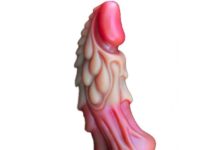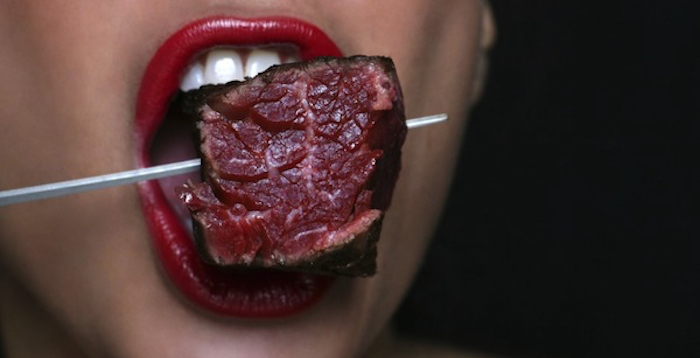For as fascinated as society is with sex and the female body, you’d think we’d be a little more informed about the vagina. A 2010 Cosmo poll found that 60 percent of women didn’t know a lot about their vaginas. Heavens knows how many men don’t know much about the love canal. Knowing it and understanding it can lead to better sex and health.
Being Anatomically Correct
1. The first and most important thing to know is that the vagina is an internal structure. The outer portion of a woman’s privates is called the vulva, which includes the inner and outer labia, the clitoris, clitoral hood and the opening to the urethra and vagina.
2. The average length of an unaroused vagina in a mature woman is between 2.5 and 3 inches wide and 3.5 inches long. The vagina can expand up to 200% during sexual intercourse and giving birth.
3. Inside the vagina is a series of ridges produced by folds of the vagina called the vaginal reggae. They allow the vagina to extend and stretch.
4. The length of the labia minora can be between 3/4 inch and 2 1/3 inches.
5. Both sharks and vaginae have a substance called squalene. Squalene exists in shark livers and is also a natural vaginal lubricant.
About Those Smells and Discharges (Yeah, I know, it’s unpleasant and uncomfortable to talk about, but it’s important to be sexually healthy.)
6. The vagina is self-cleaning and, consequently, physicians discourage douching. The vagina has colonies of mutually symbiotic flora and microorganisms that protect against dangerous microbes. Disrupting this balance can cause yeast infections and abnormal discharge.
7. While vaginal discharge can help lubricate the vagina, it is different from the vaginal lubrication produced during sex. The lube comes from special, pea-sized ducts called Bartholin’s glands, which are located around the vaginal opening.
8. Vaginal discharge does not contain any waste products. It contains fluid that seeps through the walls of the vagina, cervical mucus, uterine and tubal fluid, secretions from glands in the vulva, oil and sweat from vulvar glands, old cells from the walls of the vagina, and healthy bacteria. Vaginal discharge contains mostly salt water, mucus, and cells.
9. The average amount of vaginal discharge a woman of reproductive age secretes over a period of eight hours is ¼ teaspoon. Every woman makes different amounts of vaginal discharge, though it varies depending on where a woman is in her cycle. A woman procures the greatest amount of discharge, .40 teaspoon, around the time of ovulation.
10. Each vagina has its own smell. The smell depends on a variety of factors, including the combination of normal bacteria that live in the vagina, diet, types of fabric a woman wears, level of hygiene, how much a woman sweats, and gland secretions.
11. Bacterial vaginosis (BV) causes the classic fishy smell in a vagina and is sometimes associated with discharge, odor, pain, itching and burning. Researchers don’t fully understand how a woman develops BV, but know it is associated with an imbalance of the bacteria that are normally found in a woman’s vagina. Increased risk includes having a new sex partner or multiple partners and douching. A woman cannot get BV from toilet seats, bedding, or swimming pools. Women who have never had sex can also be affected.
12. Different vaginas have different smells at different times of the day. Right out of the shower, a vagina may not smell. After running or exercise, a vagina might smell musky from all the sweat glands. A menstruating vagina may smell like iron, and when a vagina has an overgrowth of yeast, it may smell like bread. After intercourse, a vagina may smell faintly like bleach, as semen has a smell of its own. If there is an overgrowth of bacteria, the vagina may smell like fish.
13. There are natural ways to make a vagina smell fresher without douching. Tactics include removing pubic hair; wiping with baby wipes instead of toilet paper, drinking cranberry juice, going panty-free or wearing cotton panties, eating probiotics, avoiding panty hose and tight jeans, and eating a vegetable-based diet. Foods such as coffee, asparagus, beets, alcohol, broccoli, onions, garlic, and curry can affect the smell.
14. Sweating down there isn’t only normal; it provides a necessary function. Just below the skin of the labia and clitoral hood are hundreds of tiny glands that secrete oil and sweat. This can protect your delicate areas from friction and overheating.
15. A vaginal fart, also called a “queef,” is common. Unlike gas expelled from the rectum, which contains fecal waste and has an odor, vaginal flatulence is odorless and unrelated to the rectum.
More Healthy Stuff
16. It’s possible for a woman to develop an allergy to the proteins in semen. This condition is known as human seminal plasma protein hypersensitivity. Most cases only involve itching and swelling after sex, but in some cases it can be life threatening. Research shows that certain women are allergic to certain men but not to others.
17. Vaginas — like breasts, knees, and butts — can get saggy. Pregnancy, childbirth, age, hormonal changes, genetics, and years of gravity can weaken the supports of the female genital tract can cause sagging. Kegel exercises, maintaining a normal weight, avoiding constipation, and not smoking are ways to keep vaginas from sagging.
18. A woman’s vagina can fall out and hang between the legs. It’s a condition known as pelvic prolapse. In most cases it can be fixed.
19. Painful sex (dyspareunia) is normal after a woman loses her virginity. But if the pain does not lesson and resolve after a while, other conditions may be involved, including vulvar vestibulitis (inflammation of the vestibule), vaginismus (involuntary contraction of the vaginal muscles), allergic reactions to things such as latex condoms or spermicide, and endometriosis (when lining from the uterus gets on the ovaries, bowel, and pelvic lining). As women age, lower levels of estrogen can cause atrophic vaginitis, or thinning of the vagina.
The Sexy Stuff!
20. The first inch or two of the vagina has the most nerve endings and is the most pleasure receptive.
21. The G-spot (Grafenberg spot) lies two to three inches inside the vagina, on the anterior wall (near the belly button), just under the urethra. Researchers believe this area has a different texture than the rest of the vagina because it may be a remnant prostate gland.
22. Increasing evidence suggests that the G-spot feels good because it lies right over a deep part of the clitoris. Although experts describe the G-spot as being inside the vagina on the anterior wall, just under the urethra, the crura of the clitoris actually runs right there.
23. The A-spot is a tender bit of tissue at the end of the vagina, just in front of the cervix. You can find it past the G-spot along the upper wall of the vagina almost to the cervix. The A-spot produces lubrication and orgasmic contractions. The recommended technique is to stimulate it, along with the G-spot, in long strokes on a regular basis to build up the response in the area.
24. Like the clitoris, the labia minora also contain erectile tissue that gets slightly stiffer when things heat up.
This article originally appeared on A Good Woman’s Dirty Mind.
































